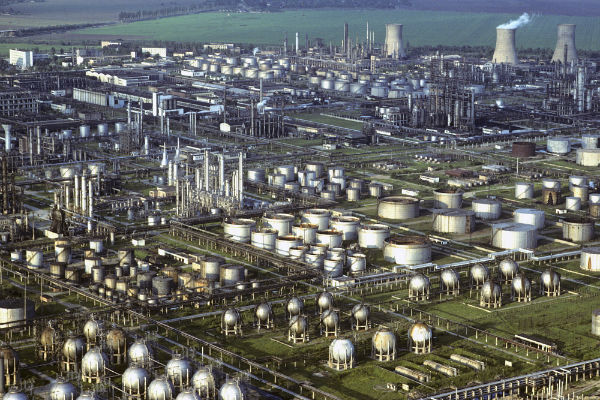By: Nadia Al-Ansary
Send to a friend
The details you provide on this page will not be used to send unsolicited email, and will not be sold to a 3rd party. See privacy policy.
Nadia Al-Ansari says research funding is the Gulf states’ bridge to knowledge economy and sustainable development.
Since the emergence of the oil era in the Arab Gulf, its six Arab states have become major importers of technological products from around the world. This reflects high levels of income and living standards on one hand. On the other hand, it reflects the lack of a vision, on the part of officials, for a future where technology is developed and transferring to other countries, rather than imported.
With the demise of the oil era come economic changes that Arab Gulf states should have recognized — especially in light of free trade, the World Trade Organisation’s trade laws and globalization, which opened up competition for goods and services in global markets.
To guarantee their presence and staying power in these markets, Gulf states need to find and indigenise a competitive advantage. This can only be achieved through funding scientific research, technology and innovation (STI), and then commercialising the products of research and development.
“Investment in scientific research will not be effective unless research results are applied to catalyse development and societal progress.”
Nadia Al Ansary, Science and Technology Development Fund
Recent moves by the Arab Gulf states indicate a desire to shift towards knowledge-based economies and knowledge industries. This desire is clearly reflected in countries’ interest to support scientific and technological research projects, encourage creativity and innovation, invest in intellectual property rights including patents, and build the capacities of a national workforce while attracting capable scientists from abroad. [1] But more needs to be done.
Spending is a necessity
Since oil is the primary source of national income for Gulf Cooperation Council states, responsible for about 47 percent of their GDP (gross domestic product), these states face tremendous pressures as a result of falling oil prices. They needed to diversify the sources of national income to avoid risks of dependence on oil exports, and to maintain long-term growth and financial surpluses. [2]
There is some investment in scientific research as part of that diversification. But investment in scientific research will not be effective unless research results are applied to catalyse development and societal progress. And this depends on finding the political will to create the right climate, build human capacities and increase spending on scientific research.
South Korea is a clear example of the benefits of such a shift in national spending. Its spending on research development in the 1960s did not exceed 0.2 per cent of GDP; by 2014, it increased to about 4.3 per cent, transforming the country into one of the world’s most technologically developed. This gives a strong indication of the relationship between spending on scientific research and industrial progress. [3]
In Arab Gulf states, spending on scientific research as a percentage of national income does not exceed 1 per cent on average — with the exception of Qatar, whose spending reached about 2.8 per cent of GDP in 2009.
We should admit that achieving sustainable development and a globally competitive economic growth rate, and so reducing the technological gap between Gulf countries and developed countries, depends on increasing spending on scientific research to no less than 2 per cent of GDP.
Diversifying funding sources
The low level of spending on scientific research compared with other regions indicates another flaw: Gulf states’ heavy dependence on governmental spending. By contrast, in developed countries the private sector supports most of research and development operations by financing research activities relevant to developing industry.
“Scientific research in the Arab Gulf states has not prioritised solving problems affecting communities.”
Nadia Al Ansary, Science and Technology Development Fund
In the Arab Gulf states, a lack of trust between scientific research and industrial sectors also undermines the links that are needed in order to discuss technological problems and solve them locally. This increases reliance on recruiting foreign experts and technologies.
It is also worth noting that scientific research in the Arab Gulf states has not prioritised solving problems affecting communities.
And it is worth remembering that for many countries, funding for scientific research may come from international grants and aid budgets. Other sources generally range from governmental spending, through allocating part of the national income and which varies depending on the annual budget, from companies in the productive and service sectors, and from research units in public sector companies.
Yet, the Gulf states rarely depend on foreign funds to support scientific research, given the huge surpluses in their annual budgets. They do not suffer from a lack of funds, but from the goals of their expenditure.
A solid foundation
The cornerstone of scientific research is human resources. The GCC countries suffer, as is the case in all Arab countries, from a shortage of qualified staff in the field of scientific research. The percentage of scientific researchers in the population is lower than the global average — in developed countries, researchers may exceed 3,600 per each million people. [4]
GCC states generally depend largely on the availability of labour from foreign countries. The percentage of migrant workers exceed that of local people in some Gulf countries (such as UAE, Qatar, Bahrain and Kuwait), and is about to reach half of the population in other countries (such as Saudi Arabia). This means Gulf states should invest in human resources if they want to make the transition from knowledge-consuming nations to knowledge producers and exporters.
Moreover, most holders of postgraduate degrees in science and technology work in universities, opting against scientific research centers for the relatively easy work and social prestige of teaching posts, as teaching often prevails at the expense of research activity at universities.
“Gulf states rarely depend on foreign funds to support scientific research, given the huge surpluses in their annual budgets. They do not suffer from a lack of funds, but from the goals of their expenditure.”
Nadia Al Ansary, Science and Technology Development Fund
Gulf states should be credited, however, for recent efforts to establish research centers that are independent of universities, with research and development their primary function. Yet, we must admit that they are not enough.
Providing incubators
There is data to back this up. A field survey of research and development centers in GCC states found a significant increase in the number of research centers from 2005 to 2011, in comparison to previous decades. It also found a lack of human resources in these centres, except in Qatar. [5]
The survey revealed that more than half of the surveyed research and development centers have at least one industrial partner, with Saudi Arabia considered a leader in the Gulf in terms of linking scientific research to industry. Forty-one per cent of these centers do not enter into partnership with industrial enterprises.
Positive signs included the fact that research and development centers, especially in Saudi Arabia and Qatar, have excellent international, regional and local partnerships with industry. They also support work in a diverse set of scientific fields and have the ability to attract international staff, as well as the potential to attract more funds dedicated to research, development and industry.
Applied research in the GCC states focuses on the environment (19 per cent), energy (16 per cent), information and communication technology (13 per cent), medicine and pharmacy (11 per cent), and engineering (9 per cent). This is a good sign, as these fields are linked to a great extent to economic development and knowledge industries.
Lifting barriers
The survey found five obstacles to the progress of scientific research and development for industrial applications in the Gulf states: a lack of clear methodology for allocating research funding, the weak role of the private sector in providing this funding, the absence of a Gulf strategy for research and development, industrial enterprises’ poor awareness of the importance of scientific research in developing their business or products, and the absence of an index for classifying Gulf research centers in terms of quality.
Therefore, what is needed is action to reverse these trends.
In order to maximize the role of scientific research as a driver of development, we must work to remove obstacles, support researchers, and create opportunities for cooperation. This can be done by encouraging and financing scientific networks, setting up a fund for collaborative projects between researchers in the region, and promoting the exchange of visiting professors between universities and research centers. [6]It is clear that Gulf Arab states fall into two main groups in terms of scientific research capacity. The first comprises Saudi Arabia, Qatar and the UAE, which have made remarkable progress in STI (science, technology and innovation) global indicators in recent years. By 2020, this group is expected to be ready for a knowledge-based economy.
The other group includes Kuwait, Bahrain and Oman, which rank modestly on STI global indicators and will need much time and effort to improve their environment for scientific research. [7]
One final point: the capital spent on research and development in Arab Gulf states must be considered a strategic investment to achieve growth and sustainable development, especially if it depends on national capabilities and experience. The best proof of this is in the contribution of scientific research and development to GDP growth, which has reached 80 percent in developed countries — meaning that the return is far greater than that of investing in other sectors.
Nadia Al Ansary is a project officer for nanotechnology research, and programmes director of the short-term fellowship of the STF & Technology Incubator Program at the Science and Technology Development Fund. Nadia is also cofounder and member of advisory board of the Egyptian Young Academy of Science.
This piece was produced by SciDev.Net’s Middle East & North Africa desk.
This article is part of a series on the future of research funding in low and middle income countries supported by the International Development Research Centre
References
[1,6] Moza M. Al-Rabban, Strengthening the Gulf Cooperation in scientific research and development and to link the results of economic development (Arab Scientific Community Organization, 8 September 2016)
[2] GOIC: Oil Prices.. Repercussions and Available Options (Gulf Organization for Industrial Consulting, 13 April 2016)
[3] The World Bank, Research and development expenditure (% of GDP)
[4] United Nations Education, Scientific and Cultural Organization, Hunan Resources in R&D (UESCO, November 2015)
[5, 7] Gulf Organization for Industrial Consulting, The industrial map of GCC countries (GOIC, 2012)














